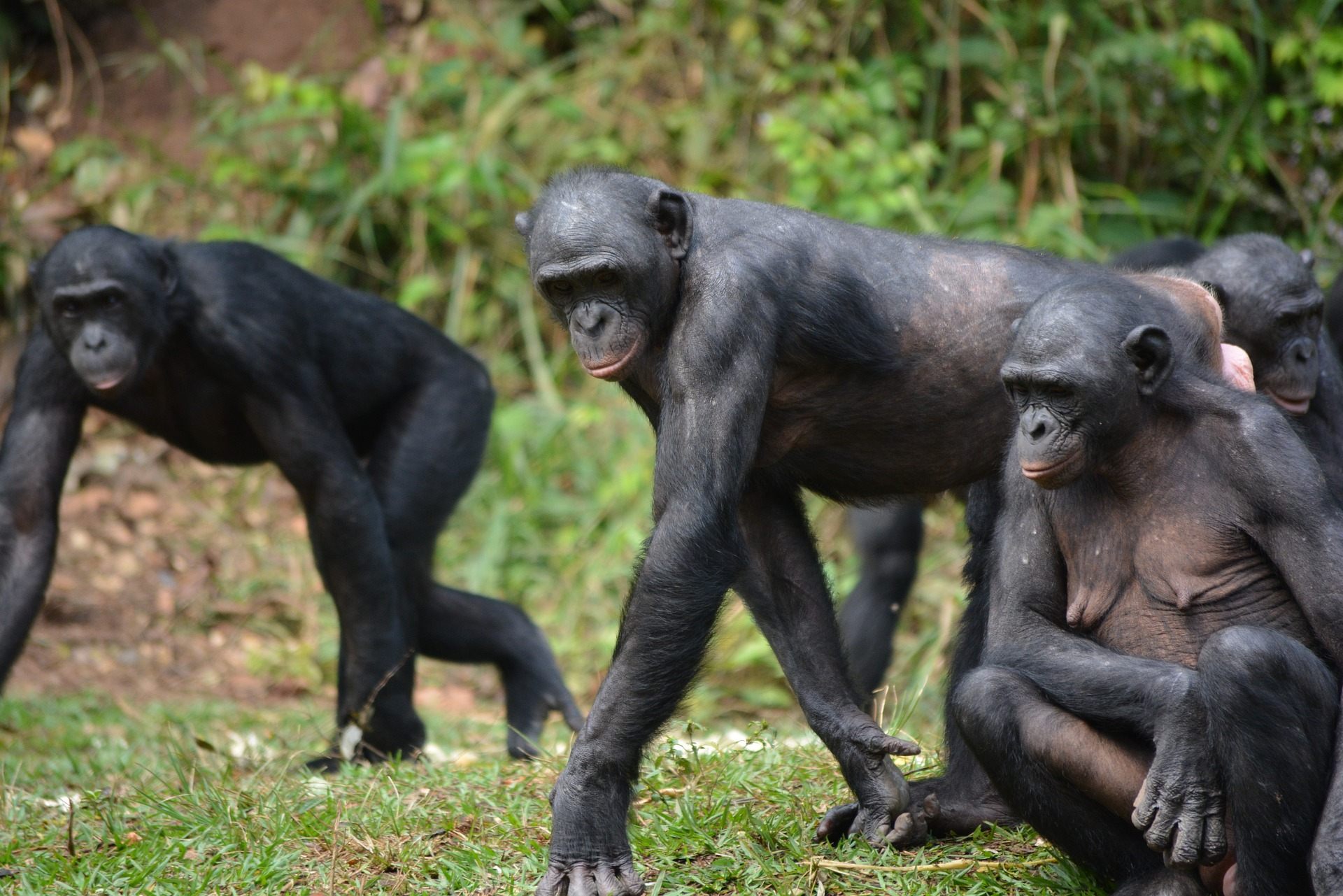The Common Language of Gesture Between Bonobos and Chimps
If a bonobo presented you its arm, would you know what it meant?

Among human beings, some gestures seem universal—an open hand for begging; a shrug of the shoulders for confusion; backing away when someone is a little too close for comfort. Others don’t always translate from one culture to the next, like a thumbs up or a shake of the head. When it comes to our primate cousins, gestures get still more complicated: Our friendly smile, to a gorilla, might indicate anything from appeasement to aggression. New research published today in PLOS Biology, suggests that, between chimpanzees and bonobos, many gestures require little translation. The two ape species are distinct, but closely related—they separated a couple of million years ago—though the degree of similarity between the meanings of their gestures is a new discovery.
If a bonobo fell on all fours and then presented its arm in front of you, you’d likely wonder what it wanted you to do. A chimpanzee, the study says, would know the answer: It’s short-hand for “climb on my back.” A team of researchers from the Universities of York, St Andrews, and Kyoto analyzed 33 bonobo gestures by observing how the primates reacted to one another’s hand or body movements—whether a bonobo stroking its mouth communicated that it wanted to be groomed, left alone, or given an object or food. (It’s the last one.)
Next, they compared their results to known gesture meanings typical of chimpanzees, and found substantial overlap between the two. A bonobo’s “big loud scratch” means “groom me”—82 percent of the time, a chimpanzee’s does too. Another example is known to researchers as a “hand fling,” and would be instantly recognizable to any child that’s ever been shooed. “It’s like, ‘move away,’ or ‘stop that,’” says researcher Kirsty Graham of the University of York.
That these meanings are shared across species and social groups is particularly interesting to the scientists. “The most parsimonious explanation for [the shared understanding] is that the gestures are biologically inherited,” Graham says, which may include inheriting them from a common ancestor. But there’s still more that the researchers hope to learn about how they’re acquired—whether they seem to kick in at a common point of development across both species, whether they’re ritualized in some way, or whether they learn them from one another socially.
Scientists are also beginning to examine whether humans share or understand these gesture meanings. Because human beings use so many different gestures, observing them is a very complicated way to analyze how many gestures are shared across species—instead, human participants are being tested on their comprehension of bonobo or chimpanzee gestures. In a recent online experiment, 15,000 participants were shown videos of primate gestures and asked to select what they thought they might mean. A correct answer, Graham says, might indicate that we still have elements of this shared understanding. Another related study includes testing the gestures on pre-verbal infants. We may have moved on from “climb on my back,” but there’s still plenty of room for overlap.





















Follow us on Twitter to get the latest on the world's hidden wonders.
Like us on Facebook to get the latest on the world's hidden wonders.
Follow us on Twitter Like us on Facebook